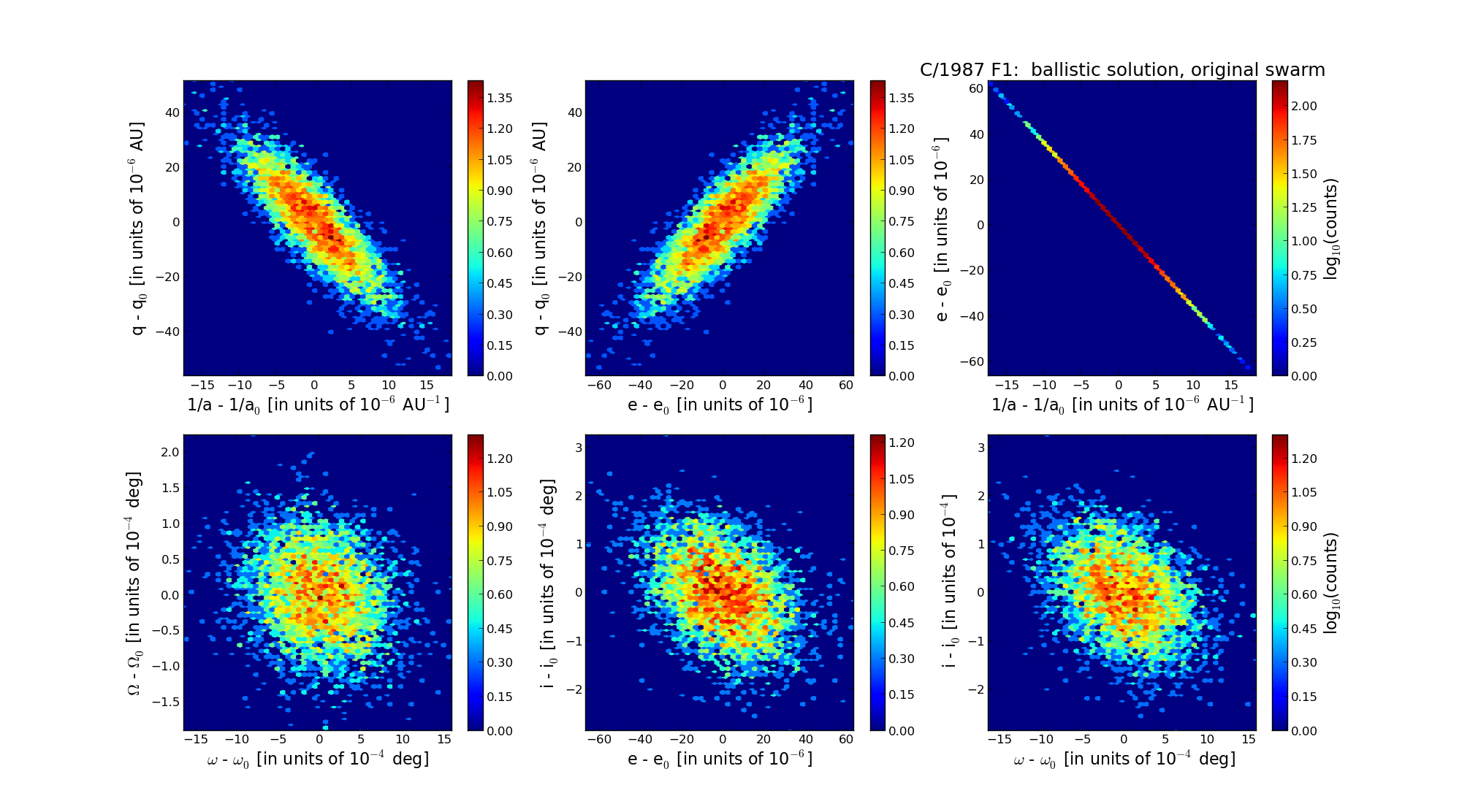| Solar System Dynamics & Planetology Group |
 |
C/1987 F1 Torres |  |
| Solar System Dynamics & Planetology Group |
 |
C/1987 F1 Torres |  |
| number of observations | 56 |
| number of residuals | 108 |
| data interval | 1987 Mar. 28 — 1989 Dec. 27 |
| rms [arcsec] | 1.14 |
| orbit quality class | 1a |
| Epoch (TT) | 19870326.0 | = JD 2446880.5 |
| time of perihelion passage (TT) | 19870410.278029 | ± 0.002348 |
| perihelion distance | 3.62460449 | ± 0.00001506 |
| eccentricity | 1.00101531 | ± 0.00001802 |
| argument of perihelion [deg] | 329.089760 | ± 0.000451 |
| longitude of the ascending node [deg] | 194.487714 | ± 0.000055 |
| inclination [deg] | 124.079942 | ± 0.000075 |
| inverse semimajor axis [10-6 au-1] | -280.12 | ± 4.97 |

| Epoch (TT) | 16831114 | |
| time of perihelion passage (TT) | 19870409.792606 | ± 0.002309 |
| perihelion distance | 3.62427914 | ± 0.00001504 |
| eccentricity | 0.99978940 | ± 0.00001801 |
| argument of perihelion [deg] | 329.061349 | ± 0.000450 |
| longitude of the ascending node [deg] | 194.483295 | ± 0.000055 |
| inclination [deg] | 124.014019 | ± 0.000076 |
| inverse semimajor axis [10-6 au-1] | 58.11 | ± 4.97 |
| Epoch (TT) | 22920106 | |
| time of perihelion passage (TT) | 19870409.819196 | ± 0.002347 |
| perihelion distance | 3.62589912 | ± 0.00001498 |
| eccentricity | 0.99936819 | ± 0.00001802 |
| argument of perihelion [deg] | 329.012173 | ± 0.000450 |
| longitude of the ascending node [deg] | 194.474308 | ± 0.000055 |
| inclination [deg] | 124.059494 | ± 0.000076 |
| inverse semimajor axis [10-6 au-1] | 174.25 | ± 4.97 |